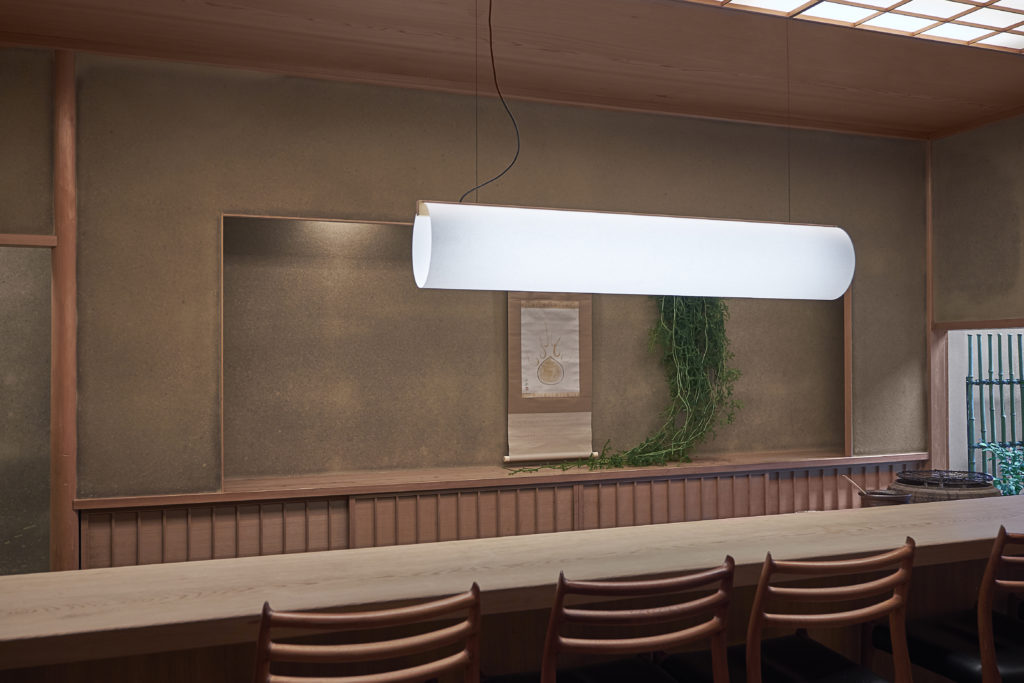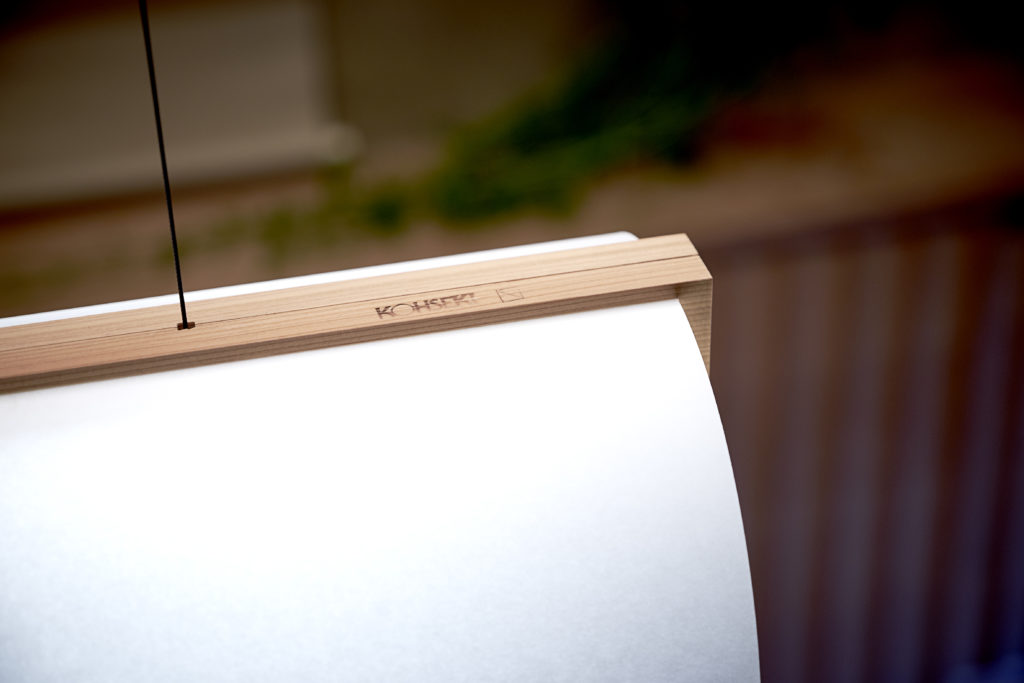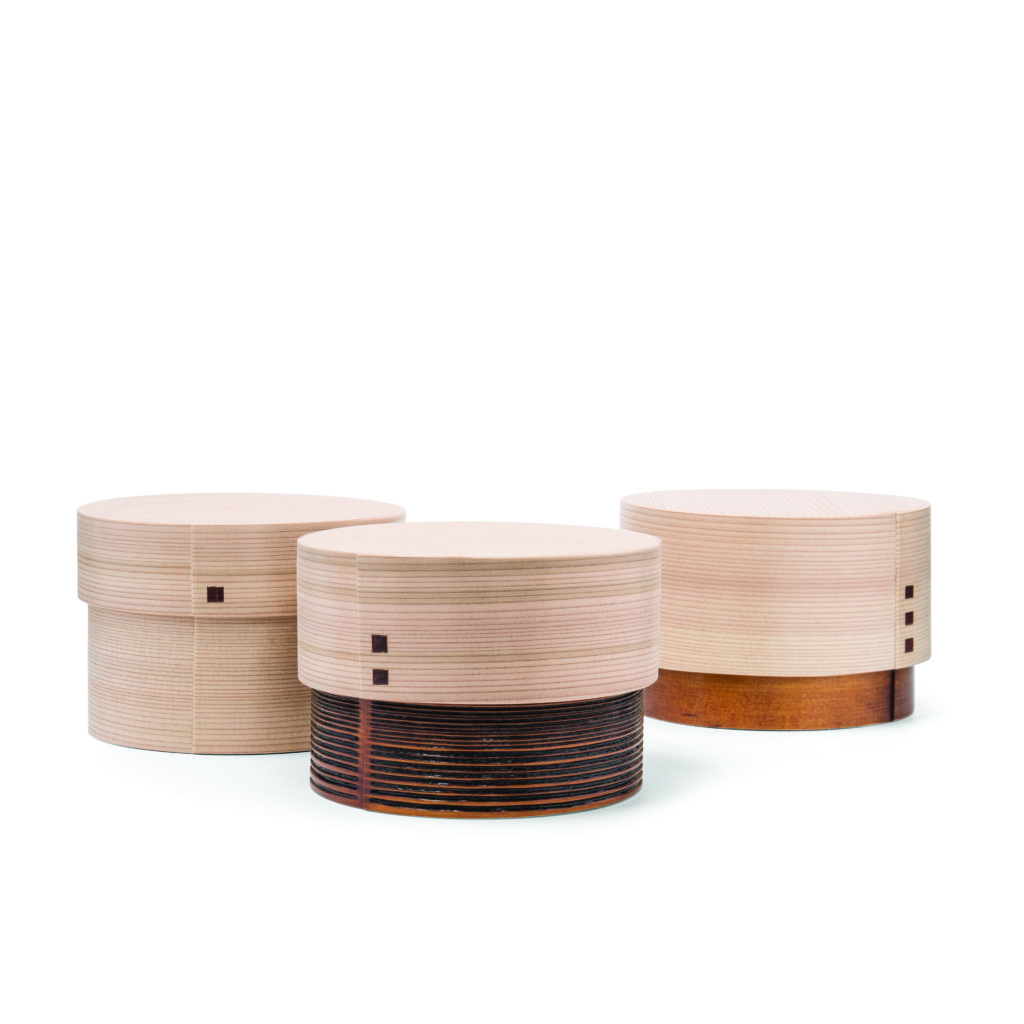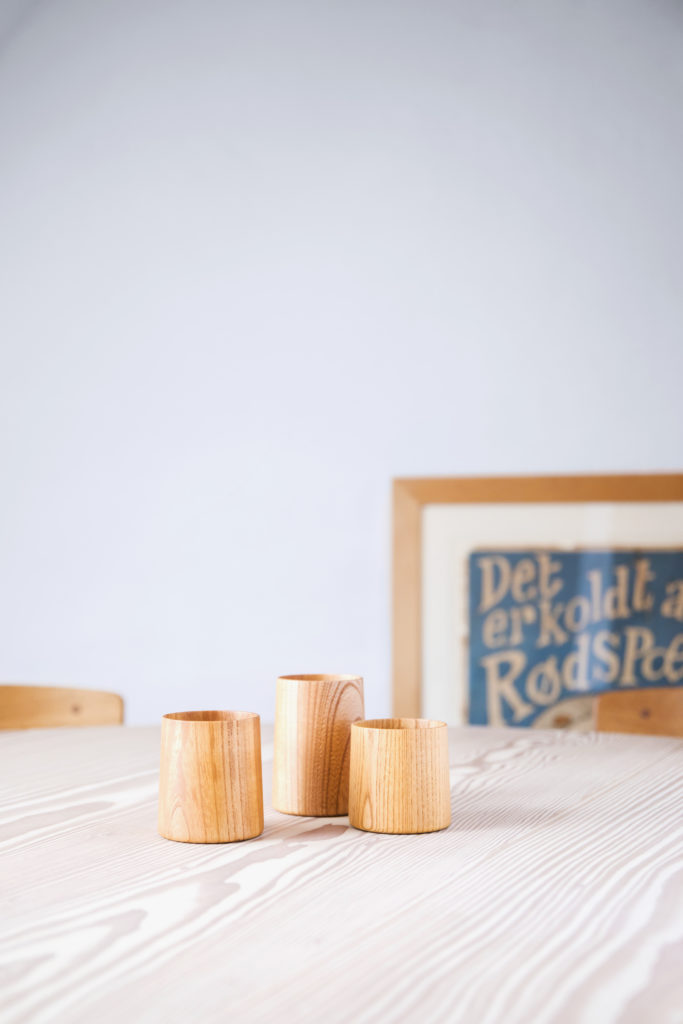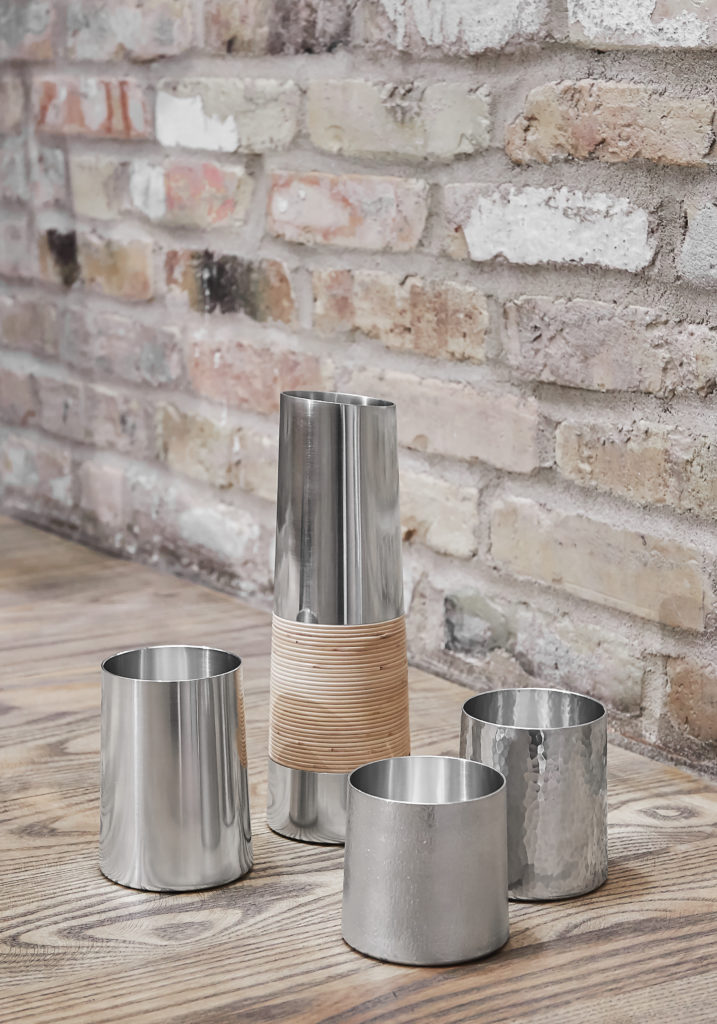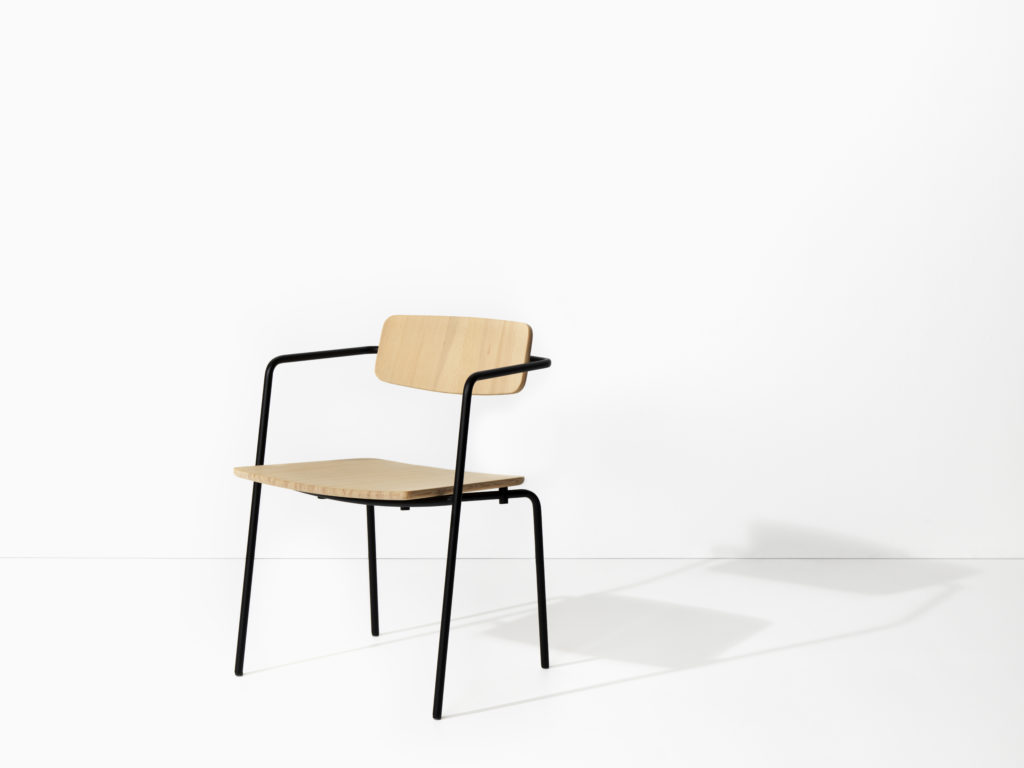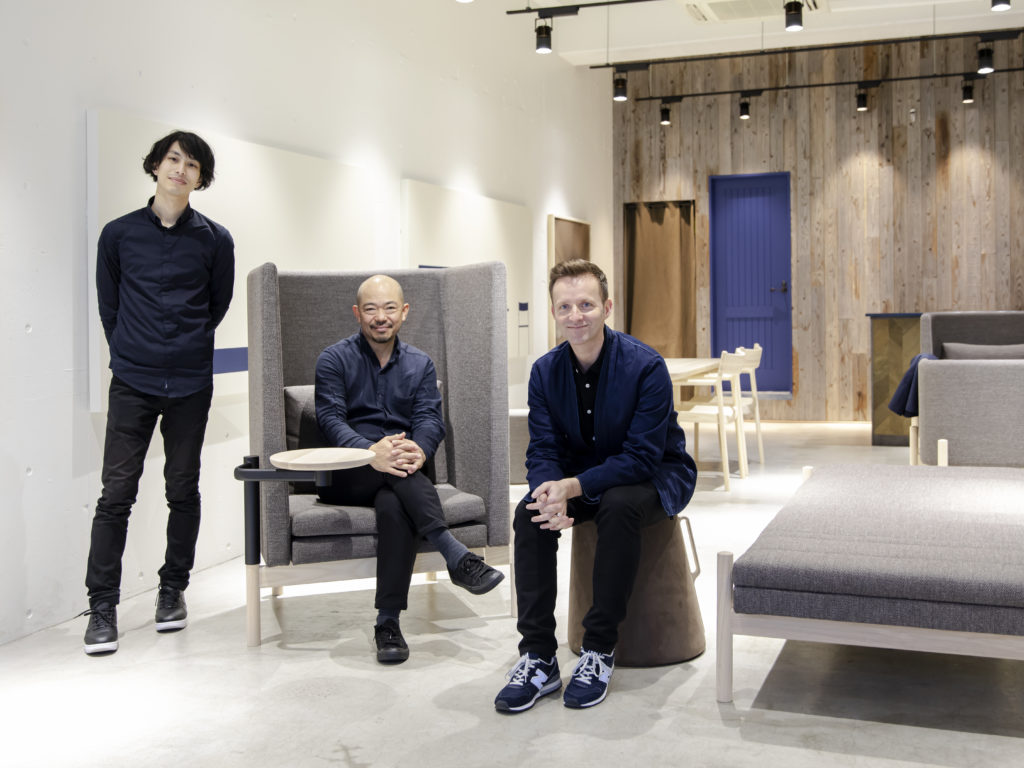デンマークと日本のデザインを融合させた家具建築家:「初めて日本を訪れて以来、日本は私にとって恋人のような存在でした。」
Lars Vejen(デザイナー/建築家)にとって日本は若い頃からずっと影響を与え続けるものであり、現在Larsはデンマークのオーフスと京都の両方を拠点に自身のスタジオを運営しています。しかし、どうしてここまで日本と関係性を深めてこれたのでしょうか?
インタビュー : Anne Sophie Thingsted
デザイナーであり、建築家であるLars Vejenは、日本での多数のデザインプロジェクトやコラボレーション、展示会を行ってきており、日本を心酔する思いは彼のクリエイティブな作品たちに影響を与えてきました。
その2つの国でスタジオを構え、日本でコラボレーションして生み出された作品であるENSOランプシリーズ、WAPPA弁当箱、SAIBIカップコレクションなどから日本とデンマークのデザイン要素を組み合わせることを非常に楽しんでいるように思えます。
しかし、Lars Vejenの故郷であるスカンジナビアとはまったく異なる場所であるこの日本とのロマンスは何から始まり、日本はどのようにインスピレーションを与え続けているのでしょうか?東京のデンマーク大使館はデンマークの建築家と会い、これらの疑問を伺ってみました。
「初めて日本に訪れて以来、日本は私の恋人のような存在でした。」
質問:「京都とオーフスの両方にスタジオを持ち、フルタイムで仕事を回すのは時間的に難しい問題が出てくる気がします。なぜ一つの国でしないのですか?」
Lars Vejen:「私はワンマンスタジオで運営しているので、私が雇用しているのは自分だけです。そのためどこにいても自由に仕事ができるので時間的な問題はありません。日本に初めて訪れて以来、日本は私にとって恋人のような存在でした。私は日本にいることを本当に楽しんでいますし、人々は親切で、献身的で、いつも助けてくれます。また、非常に多くの豊かな伝統と刺激的な文化があることも私の日本が好きな理由の一つです。
しかし、これは他の場所でも同じことがあり得たかもしれません。私はここに学生のときに来ていたので、実は本当の意味で日本が大好きかどうかわかりません。もしかしたら、最初の大きな旅先が大好きになってしまっただけしれません。もし私がニューヨークでインターンシップをしていたなら、私の気持ちはその街に向いていたかもしれません。ただ日本は私にとって本当に心地よい場所であり、ここで出会った人々と本当に仲良くさせてもらっていると感じています。
現在、自分自身でスタジオを運営しているので、どこへ行っても仕事ができます。また、多くの日本のメーカーや職人さんと仕事をしているので、私にとって日本にいることはごく普通のことです。普段日本に年に2~3回来て、一ヶ月ほど滞在するようにしています。もちろん、仕事のために来ますが、買い物、料理、掃除など日常的なことをすることも楽しんでいます。日本とデンマークの両方で日常生活を送ることが、今の私にとって完璧なバランスだと思っています。」
質問:日本で特にインスピレーションを受ける場所はありますか?
Lars Vejen:私はいつも日常生活からインスピレーションを受けてきました。美術館や制作現場でなにかインスピレーションを探しに行くことは特別しません。京都の街を散歩したり、人と出会ったり、日常生活の中でアイデアを見つけます。もちろん材料を見たり、クライアントからのブリーフ資料は読んだりというときもありますが。人生を生きること自体が私にとってのインスピレーションです。」
「私が日本で働いていた会社は、本当に伝統的な会社でデンマークの伝統的な職人とはでまったく違う方法で仕事をしていました。」
質問:「日本へ夢中になったきっかけはなんですか?」
Lars Vejen:「もともと、私は1995年に学生として京都の企業でインターンシップをするために日本に来ました。非常に伝統的な茶屋の建築を行う数寄屋建築と、木材と和紙のみを使用した家具やランプを手がける指物の会社です。ネジは使わず、接着剤、伝統的なジョイントのみでつくりあげる伝統的な工芸技術を扱う会社です。それが日本との最初の出会いでしたね。それ以来、私はこれまでに100回近く来日しています。現在は京都に小さな家を所有し、定期的に日本のクライアントのために働いています。
1995年はそれほど昔ではありませんが、京都での3か月の間に出会った外国人の5人以外はすべて日本人で周りにも日本の物だらけで、英語を話せる人もいませんでした。その頃は自分自身のことをエイリアンのようだな、と感じていましたね。職場の同僚でさえほとんど英語を話せなかったので、デザインを通してペンと紙を使ってコミュニケーションを取るというようなことをしてなんとか乗り越えていました。
質問:「日本の職人の技術や手法についてどんな第一印象を持ちましたか?」
Lars Vejen:「デンマークの建築学校にいる間、実際に多くの職人、ワークショップ、製造会社を訪問をしていました。そのため、デンマーク人が伝統的な職人にどのように手法をとるかについては、私が若かった頃でも知識はもっていました。しかし、私が日本で働いていた会社は、想像と全く違いました。
日本では時間がかかっても、できる限り完璧に近い状態になるまで何かに取り組み続けることに問題意識はありません。良い仕事をすることに対するその忍耐強さに、非常に感銘を受けました。インターンで入ったときに、職人になるための非常に独特な方法がまだあります。もちろん、最初から多くのことを知りませんが、その後、同僚から少しずつ学び、可能な限り最良の方法で製品をマスターする方法についての知識を獲得し、常に完璧を達成するよう努めます。」
質問:「クラフトマンシップとして、違いを作るために日本の職人には忍耐力というものがあると思います。そうした忍耐力を目にすることはありますか?」
Lars Vejen:「世界のほぼすべての地域で、仕事にはスピード、成長、経済が必要だと思います。日本はもちろん、食べ物を買って家賃を払うためにお金を稼ぐ必要がある国ですが、日本人はデンマークの私たちが「nøjes」と呼んでいることをします(編集:何かに間に合わせるため)。もっと努力するのではなく、使用しているクラフトで達成できることに満足することにします。
たとえば、1人の工房で仕事をすることを選択したワンマンスタジオのクライアントがいますが、彼らはそれでどこまで達成できるかという制限を受け入れます。例えば、大富豪にならないなら大丈夫ということです。違う道を選んだことで、それを十分に楽しんでいます。ここでは、クラフトで働くことを選んだことに何らかの満足と深い献身があります。それはお金とは何の関係もありません。」
質問:「あなたがたった1つ挙げるとすると、日本のクラフトマンシップについて最も魅力的なものは何ですか?」
Lars Vejen:「献身性ですね。日本の伝統工芸をよく見ると、多くの職人が何世代にもわたって同じ工房で働いており、父親や祖父などを引き継いでいます。私が今日働いている会社のいくつかは、第7世代または第10世代です。 200年以上前のものもあります。ここで見ることができた献身性は素晴らしいものです。
実際、この特性はデザインの外観に影響すると思います。もちろん、職人とデザイナーがいます。彼らの仕事は大きく異なります。デザイナーにはクラフトを行うスキルがなく、職人はデザイン思考や新しいものを開発する方法を知りません。彼らは先祖と同じコンセプト、構造、製品を使い続けています。しかし、この献身は日本のデザイナーと職人の両方にまだ非常に存在していると思います。」 dden
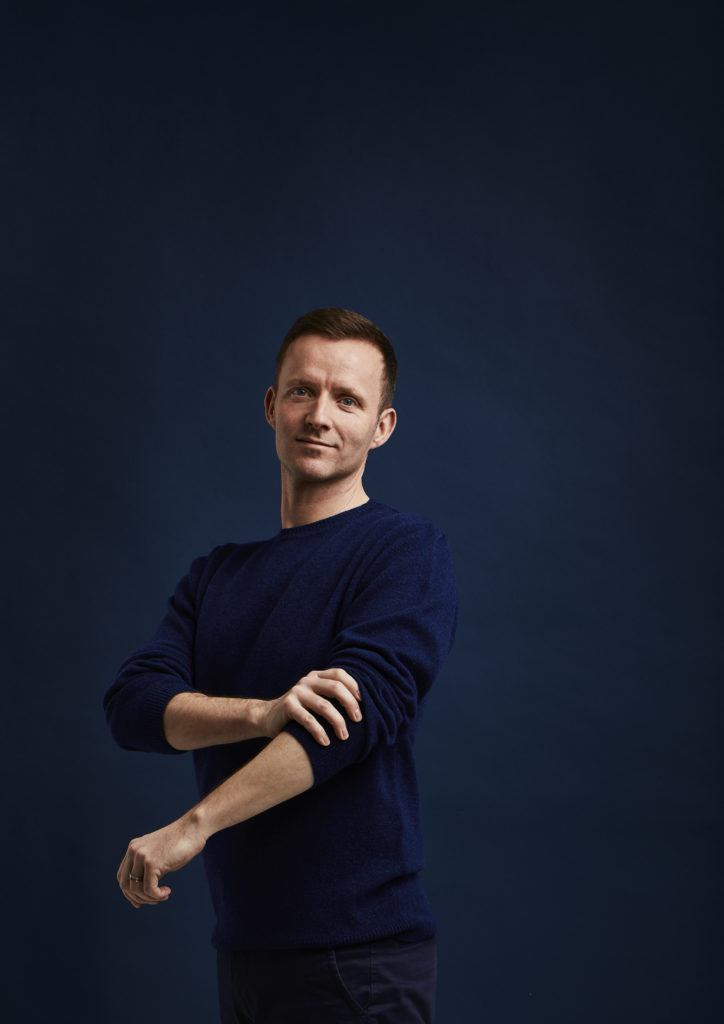
Furniture architect blending Danish and Japanese design: “Japan has been a sweetheart to me ever since I was there for the first time”
Japan has influenced furniture architect Lars Vejen both career-wise and personally since his youth. The Dane runs his own studio with an address in both Aarhus, Denmark and Kyoto. But what caused this life-long love affair with Japan?
By Anne Sophie Thingsted
Trained furniture architect Lars Vejen is behind a large number of design projects, collaborations and exhibitions in Japan, and is possessed by a deep-rooted Japan-infatuation that inspires his creative work.
His preference for combining Japanese and Danish design elements is evident in his ENSO Lamp series, his WAPPA bento boxes and in the SAIBI wooden cup collection, to name a few projects, and owning a design studio both located in Denmark and Japan, his life is divided between the two countries.
But what started this romance with Japan, a place so unlike Lars Vejen’s Scandinavian home-country, and how does Japan continue inspire him? The Danish Embassy in Tokyo met with the Danish architect to unravel these questions.
“Japan has been a sweetheart to me ever since I was there for the first time”
Question: “It must be quite a full-time job to have a studio both in Kyoto and in Aarhus. Why not just do one country?”
Lars Vejen: “I am running my own one-man studio, so I am only myself. This gives me the freedom of working wherever I want, and Japan has been a sweetheart to me ever since I was there for the first time. I just really fell in love with being here and with the way in which people are kind, nice, dedicated and helpful. Furthermore, there is so many rich traditions and so much exciting culture.
This is of course also the case elsewhere, so I don’t know if I love Japan so much because I was here as a student. Perhaps you’re more open to falling in love with your first big travel destination and maybe if I had been doing my internship in New York, my crush would be on that city. I just feel that Japan is a really good match for me, and that I have a really good contact with the people I meet here.
The freedom that I have now running my own studio has given me the possibility to work wherever I want. And since I work with a lot of Japanese craftsmen and have clients here, it just felt normal for me to be doing Japan as much as I do right now. I come to Japan 2-3 times a year and try to stay here a month every time. Of course, I travel here to work, but I also have an everyday life in Kyoto, going shopping, cooking and cleaning. Having my everyday life in both Japan and Denmark is the perfect balance for me right now, I think.”
Question: Are there any particular places in Japan, that particularly inspire you in your work?
Lars Vejen: I have always been inspired by everyday life. I never really go searching for inspiration at a specific museum or at a production facility. Inspiration for me has always been found in my everyday life strolling the streets of Kyoto, encountering people, seeing material, having a brief from a client requesting me to design something for them. Just living my life in itself is inspiration.”
“The company I worked at in Japan did things in a really traditional and completely different way than many traditional craftsman’s in Denmark.”
Question: “How did your infatuation with Japan begin?”
Lars Vejen: “Originally, I was here as a student back in 1995 to do an internship at a company in Kyoto. They were working very classically with architecture doing traditional tea house construction as well as furniture and lamps using only wood and Japanese paper. They always applied very traditional techniques and handcraft. No screws, no glue, only traditional joints and joineries. That was my first encounter with Japan. Since then, I have been here close to 100 times, own a small house in Kyoto and regularly work for Japanese clients.”
1995 isn’t that long ago, but at the same time, I can feel that time has passed, because I really felt like an alien when I first arrived here. In my three months in Kyoto, I met around five other foreigners, so everything was very Japanese back then. There were no signs in English, people didn’t speak any English. Even my colleagues at work barely spoke English, so I had to manage by what I did best, which was using pen and paper, communicating through design.”
Question: “What was your first impression of the Japanese approach to craftmanship?”
Lars Vejen: “During my time at architect school in Denmark, we actually had a lot of meetings and visits with craftsmen, workshops and manufacturing companies, so I had quite a bit of knowledge of how Danes approach traditional craftmanship. But the company I worked at in Japan did things in a completely different way.
In Japan, things take time and it’s okay to keep working on something until it is as close to perfection as possible. I was very impressed with that patience in doing a good job. When you are an intern, there is still a very distinct way to enter a process of craftmanship. Of course you don’t know much from the beginning, but then you learn from your colleagues and little by little gain knowledge on how to master craft a product in the best possible way, always striving to achieve perfection well aware that you never will, but you always try.”
Question: “Do you view the patience that Japanese craftsmen put into their work as an advantage of working with craftmanship over here?”
Lars Vejen: “I think it is, because in almost every part of the world, work requires speed, growth and economy. Japan too is of course a country where people need to make money to buy food and pay rent, but the Japanese do what we in Danish would call to ‘nøjes’ (ed.: to make do with something). You decide to be satisfied with what you can achieve with the craft you are using, rather than strive for more.
For example, I have clients that are one-man studios having chosen to work with just one craft, and they accept the limit of how far they can make it with that. Like: ‘It’s fine, if I don’t become a millionaire, because I have chosen to do this, and I really enjoy it.’ Over here, there is some sort of satisfaction and deep dedication in having chosen to work with a craft that doesn’t have anything to do with money.”
Question: “If you were to mention just one thing, what appeals to you the most about Japanese craftmanship?”
Lars Vejen: “Dedication. If you look closely at the traditional crafts of Japan, many craftsmen have worked in the same workshop in generations, having taken over after their father, grandfather and so on. Some of the companies that I work with today are 7th or 10th generation. Some are more than 200-years old. The dedication I meet here is amazing.
Actually, I think this trait influences how the design ends up looking. Of course, there is a craftsman and there is a designer, and their jobs are very different. The designers don’t have the skills to do the craft, and the craftsmen don’t know design thinking and the way of developing new things. They keep working with the same concepts, constructions and products as their forefathers. But I think this dedication is still very much present in both Japanese designers and craftsmen.”
